Universe Today - 24-May-2014
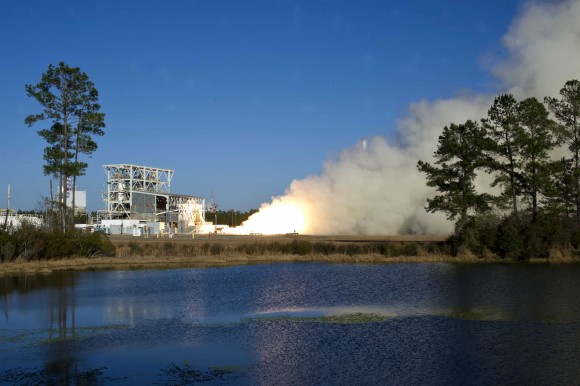
A Russian built rocket engine planned for future use in the first stage of Orbital Sciences Corp. commercial Antares rocket launching to the International Space Station failed during pre-launch acceptance testing on Thursday afternoon, May 22, at NASA’s Stennis Space Center in Mississippi. “There was a test failure at Stennis yesterday afternoon (May 22),” Orbital […]...
Astronomy Magazine - 24-May-2014

Researchers have discovered the largest fresh meteor-impact crater ever firmly documented with before-and-after images. ...
Astronomy Magazine - 24-May-2014

A survey of more than 170,000 supermassive black holes shows that galaxies whose black holes are hidden from view tend to be clumped together. ...
Universe Today - 23-May-2014
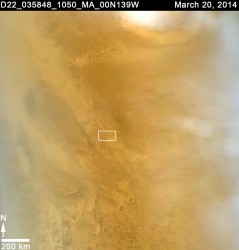
When it comes to the Universe, things often go bump in the night. But whether two galaxies collide, a star explodes in a brilliant supernova, or a meteor hits a massive planet, we tend to catch the aftermath tens to hundreds of thousands of years later. Of course, there’s always an exception to the rule. […]...
Universe Today - 23-May-2014

The private Dream Chaser mini-shuttle being developed by Sierra Nevada Corp. (SNC) has successfully completed a series of rigorous wind tunnel tests on scale models of the spacecraft – thereby accomplishing another key development milestone under NASA’s Commercial Crew Program to restore America’s human spaceflight access to low Earth orbit. Engineers from SNC and NASA’s […]...
Astronomy Magazine - 23-May-2014

Infrared observations of these blackest-of-black regions paradoxically light the way to understanding how the brightest stars form. ...
Science Daily - 23-May-2014

Scientists have prepared new details and the first comprehensive overview of the on-orbit performance of their record-shattering laser-based communication uplink between the moon and Earth, which beat the previous record transmission speed last fall by a factor of 4,800. ...
Science Daily - 23-May-2014

A survey of more than 170,000 supermassive black holes, using NASA's Wide-field Infrared Survey Explorer (WISE), has astronomers reexamining a decades-old theory about the varying appearances of these interstellar objects. The unified theory of active, supermassive black holes, first developed in the late 1970s, was created to explain why black holes, though similar in nature, can look completely different....
Science Daily - 23-May-2014

Researchers have discovered on the Red Planet the largest fresh meteor-impact crater ever firmly documented with before-and-after images. The images were captured by NASA's Mars Reconnaissance Orbiter. The crater spans half the length of a football field and first appeared in March 2012. The impact that created it likely was preceded by an explosion in the Martian sky caused by intense friction between...
Universe Today - 23-May-2014
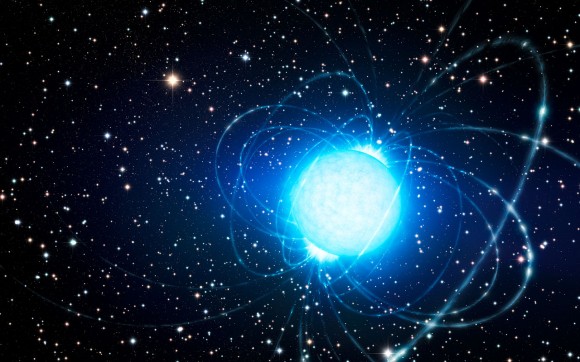
Astronomy is a discipline of extremes. We’re constantly searching for the most powerful, the most explosive, and the most energetic objects in the Universe. Magnetars — extremely dense and highly magnetic neutron stars — are no exception to the rule. They’re the strongest known magnets in the Universe, millions of times more powerful than the […]...
Universe Today - 23-May-2014
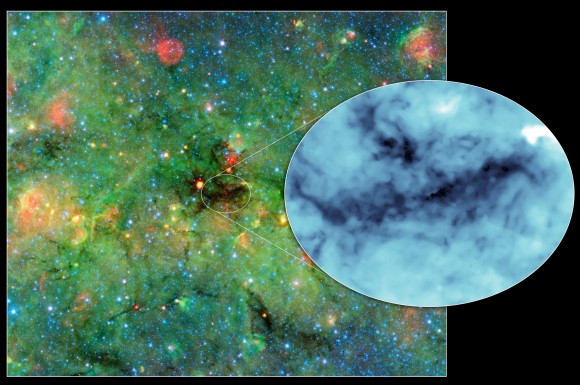
When gas and dust squeeze tightly enough together in space, no light can get through and the place is black as pitch. But this dusty cloud seen about 16,000 light-years away from us will eventually generate new stars, with the darkest parts creating powerful O-type stars — a star-type poorly known to scientists. (...)Read the […]...
Universe Today - 23-May-2014
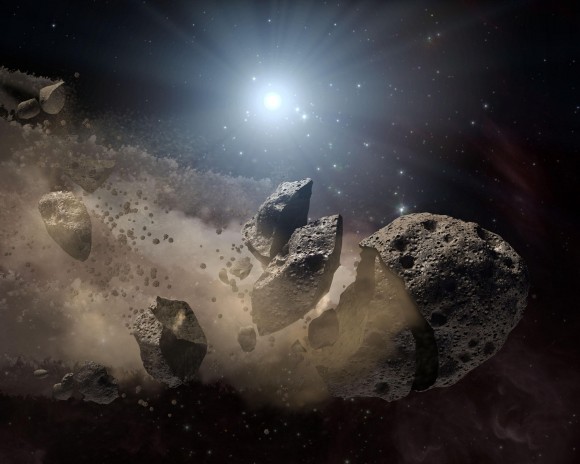
Do you lack a telescope, but have a burning desire to look for asteroids near Earth? No problem! NASA and the Slooh telescope network will soon have you covered, as the two entities have signed a new agreement allowing citizen scientists to look at these objects using Slooh. This is all related to NASA’s Asteroid Grand […]...
Universe Today - 23-May-2014
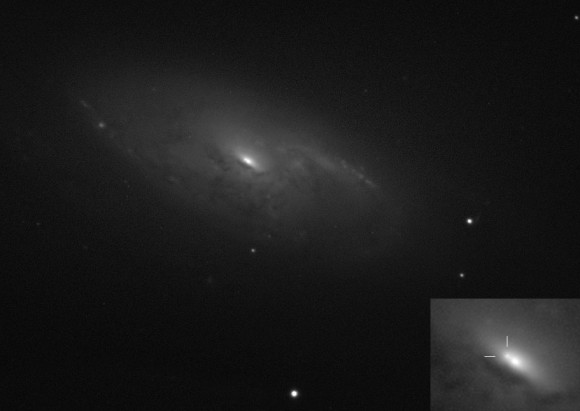
A supergiant star exploded 23.5 million years ago in one of the largest and brightest nearby galaxies. This spring we finally got the news. In April, the Katzman Automatic Imaging Telescope (KAIT) as part of the Lick Observatory Supernova Search, photographed a faint “new star” very close to the bright core of M106, a 9th magnitude […]...
Science Daily - 22-May-2014

For the first time, astronomers have direct confirmation that a Wolf-Rayet star -- sitting 360 million light years away -- died in a violent explosion known as a Type IIb supernova. Using the iPTF pipeline, researchers caught supernova SN 2013cu within hours of its explosion. ...
Science Daily - 22-May-2014

The structures and star populations of massive galaxies appear to change as they age, but much about how these galaxies formed and evolved remains mysterious. Many of the oldest and most massive galaxies reside in clusters, enormous structures where numerous galaxies are found concentrated together. Galaxy clusters in the early universe are thought to be key to understanding the lifecycles of old galaxies,...
Universe Today - 22-May-2014
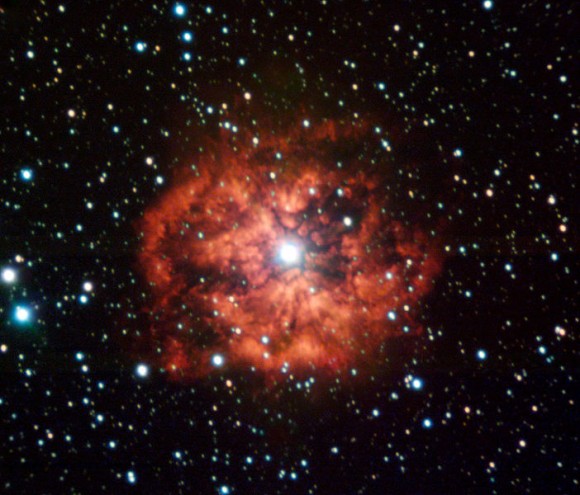
They’ve been identified as possible causes for supernovae for a while, but until now, there was a lack of evidence linking massive Wolf-Rayet stars to these star explosions. A new study was able to find a “likely” link between this star type and a supernova called SN 2013cu, however. (...)Read the rest of New Supernova Likely Arose From […]...
Universe Today - 22-May-2014

In 1964 the European Launcher Development Organisation (ELDO) and the European Space Research Organisation (ESRO) were founded, on February 29 and March 20 respectively, marking the beginning of Europe as a major space power and player in the new international venture to explore beyond our planet. A decade later these two entities merged to become ESA, and […]...
Universe Today - 22-May-2014
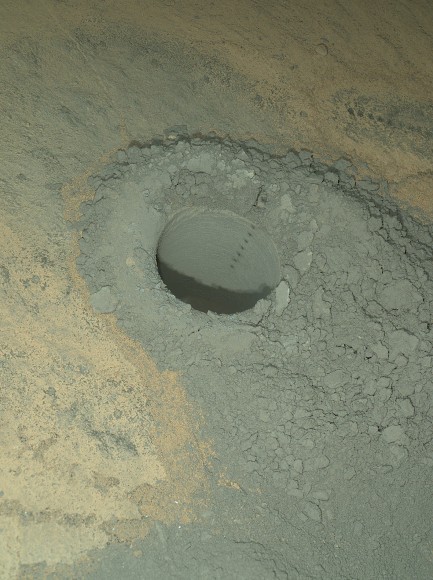
NASA’s rover Curiosity said ‘Goodbye Kimberley’ having fulfilled her objectives of drilling into a cold red sandstone slab, sampling the tantalizing grey colored interior and pelting the fresh bore hole with a pinpoint series of parting laser blasts before seeking new adventures on the road ahead towards the inviting slopes of Mount Sharp, her ultimate […]...
Astronomy Magazine - 22-May-2014

Scientists have identified a Wolf-Rayet star as the likely progenitor of a recently exploded supernova. ...
Universe Today - 22-May-2014

Can dragons really fly? And what’s with the weird seasons? A bunch of your scientific FAQs about the blockbuster Game of Thrones series are tackled in this video, with the occasional spoiler or Westeros-themed joke thrown in. (...)Read the rest of Game Of Thrones’ Weird Seasons Explained! And More Science From Westeros (98 words) […]...
















